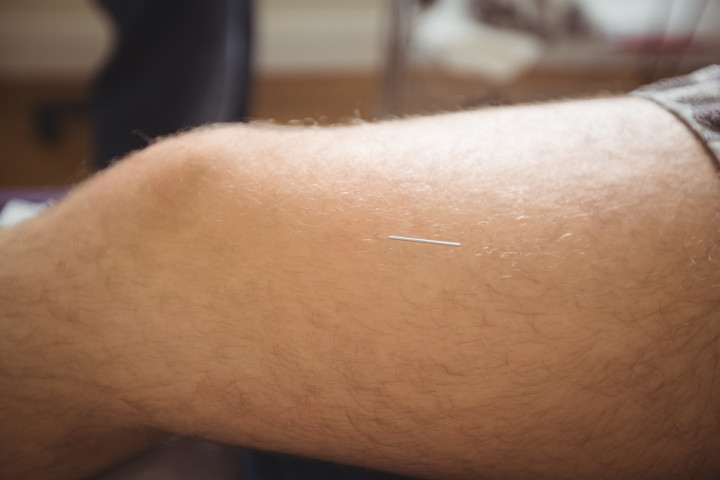Choosing a Rehab: 6 Questions to Ask

When it comes to choosing the right addiction rehab, there are many factors to be considered. Most importantly, an alcohol and drug addiction treatment program must address each patient’s needs on an individual basis. In order to identify the best facility for you, you should narrow down what exactly you are looking for and find a facility that tailors to your needs. Some key factors to consider when choosing an alcohol and drug treatment center are: Is the facility licensed and accredited? When looking for a treatment facility for addiction, it’s important to find one that carries the appropriate license and accreditation. A licensed facility has met the established guidelines for the treatment of alcohol and drug addiction by the state they operate in. In order to receive accreditation an alcohol and drug treatment facility must receive approval from an outside accreditation body. This process involves a thorough process of confirmation that the facility meets the high standards of care established for the addiction treatment industry. When looking for if the facility is accredited there’s two accreditation’s that stand out in the addiction treatment industry: CARF and JCAHO. What is the typical length of stay? Alcohol and drug addiction treatment duration varies from patient to patient. While some may prefer a shorter length of stay, a longer length of stay has been shown to improve an individual’s overall well-being. Alcohol and drug abuse is more than a physiological dependence; it affects all aspects of an individual including their psychological well-being. Longer rehabilitation programs allow a person to take the time they need to properly stop abusing a substance while working on their mental health, recovery and interpersonal relationships. However, that is not to say some may not benefit from shorter-term addiction treatment. Those with some sobriety time, or work or childcare obligations should consider an alcohol and drug treatment center that’s going to work for them. Does location matter? Location plays a vital part in a person’s recovery. It is often encouraged that the person seeking treatment gets out of their familiar environment. Sometimes, these environments have become toxic for those suffering from addiction. Individuals need to be in a place where they feel comfortable and safe. Removing yourself from familiar people and situations may help to prevent a relapse or certain triggers. It’s for these factors that individuals can benefit from traveling for addiction treatment. Although local treatment can be convenient, if you’ve gone through treatment a couple of times locally perhaps it’s time to seek alcohol and drug treatment in another city or state. Does the facility accept my insurance? This is one of the biggest factors for people that are seeking treatment. Under the Affordable Care Act, all health insurance marketplace plans must cover substance abuse and mental health treatment. However, some insurance companies may work with certain facilities only. In order to find out if the facility accepts your insurance, you can contact the facility’s Admissions Department, where they are then able to check your policy. For individuals that do not have insurance coverage, most rehabilitation facilities also offer private pay rates with a payment plan, loan financing options or scholarships. Are admissions available 24/7? Availability is very important when choosing a facility. You or a loved one may need immediate care so finding a treatment center that is open any time, day or night, is critical. Admissions Departments that are run 24/7 are also a good resource for individuals that have questions or need general information. Seeking treatment can be very challenging, but knowing that you have a dedicated team that is there whenever you need them, can ease your mind and make the process more seamless. Are there different types of treatment offered? Having different options means a more personalized treatment plan that can align with your needs. You should look into what types of techniques are offered such as: Cognitive Behavioral Therapy, Individual and Group sessions, Family Therapy, Expressive Therapy, Nutritional Counseling, Gender-Specific Processing Groups, Trauma Therapy, etc. You want to choose a facility that provides a wide range of effective and evidence-based alcohol and drug treatment methods that cater to your specific needs. If you or a loved one are seeking treatment, Footprints to Recovery’s Admissions Department operates on a 24/7 basis. We are available to answer phone calls, emails, and live chats on a round-the-clock basis. Author: Lindsey Bozzi – Footprints to Recovery – Admissions Coordinator
SMART Recovery 101: The Alternative or Supplemental Resource to 12-Step Programming

SMART Recovery (smartrecovery.org) has been an asset in the addiction recovery community for many years. In recent years, it has gained popularity as a valid resource for those seeking an alternative or a supplement to the 12-step model. SMART’s model is inclusive, involving community and peer resources in the recovery process. What Is SMART Recovery? A sober support system is critical for long-term recovery. At Footprints we highly recommend patients seek outside community, and we understand that traditional AA, 12 steps is not a fit for everyone. Some say the opposite of addiction is connection, and our goal is for you to develop your own sober support community as you transition to lower levels of care in treatment. SMART is one of many supplemental programs you can use in your recovery journey. SMART Recovery began in 1994 as an alternative to the 12 Steps and other spiritually based programs. The 12 Steps are centered on the participant’s surrender to a higher power that serves as an unwavering support throughout specific steps to recovery. Some people don’t relate to the concept of a higher power, which can deter them from 12-step groups. SMART Recovery offers an alternative to the 12-steps. SMART doesn’t focus on a higher power, but is instead a scientific approach based on behavioral change. The SMART Recovery model spread throughout the United States and the UK in the late 1990s and began growing exponentially in the early 2000s. SMART Recovery offers individuals who struggle with addiction a model that looks beyond substance abuse and instead focuses on changing addictive behaviors that cause imbalance in your life. SMART Recovery programs are available around the world for people struggling with addiction, eating disorders, gambling addiction, sex addiction, and other compulsive behaviors. It can help with cross addictions as well. A cross addiction is when you replace one destructive behavior for another. For example, you stop using drugs or alcohol, but you begin gambling compulsively. Today there are over 2,000 SMART Recovery meetings worldwide and this number is growing daily. SMART Recovery offers support through local community meetings; therapeutic programs; and online meetings, chat rooms, and message boards. Their website includes resources like suggestions for a “recovery toolbox” (smartrecovery.org/smart-recovery-toolbox) and recommended books (smartrecovery.org/suggested-reading-list). SMART is based on a four-point system: The SMART Recovery treatment program provides materials that correspond to each of these four points. These materials will help you learn how to manage addictive behaviors and live a more balanced lifestyle. In addition to the four-point system, SMART integrates behavior-centered therapies, including: All these therapies are rooted in the theory that, by challenging the way you think in the present, you can stop destructive behaviors before they start. These are evidence-based practices that have been shown to be h effective in the treatment of addiction, depression, anxiety, and PTSD. A SMART treatment program also integrates tools such as: All these tools assist you in putting your addictive behaviors into perspective. Once you understand that your problematic behavior is causing destruction and negative outcomes, you can reduce or discontinue the behavior. Foundation for SMART Recovery: Stages of Change The SMART Recovery process can be broken down into five stages. People don’t necessarily move through these stages in one smooth progression. You might move up or down many times along the path to recovery. But, in general, this describes a common relationship dynamic with the recovery process: What Can You Expect at a SMART Meeting? SMART is an abstinence-based program, which means you’ll be expected to stop taking drugs or drinking altogether. Meetings have an open format, during which SMART Recovery facilitators encourage people to share their personal experiences and any tools they have found helpful. Meetings often include open discussions, which is different than the highly structured format of the 12-Step program. Discover the Power of Choice SMART Recovery is based on the concept that every person has the Power of Choice. Through tools that teach self-management and behavioral changes, the program empowers you with the choice to abstain from addictive substances or activities. The goal of SMART Recovery is to help you gain independence from your addiction, be it drugs, alcohol, gambling, pornography, etc. The SMART Recovery program can be a great addition to an addiction recovery plan. It can be used together with a 12-step approach (like Alcoholics Anonymous or Narcotics Anonymous) or on its own. SMART Recovery can also be combined with a meditation or mindfulness practice, yoga, martial arts, or any other method or tool that brings balance and harmony into your life. How Can You Get Started with SMART Recovery? SMART Recovery tools can be utilized in both inpatient and outpatient addiction treatment settings. SMART supports the use of medically assisted withdrawal when appropriate and can be integrated into every stage of your recovery. Once you’ve reached enough stability to live independently, SMART can continue to help you during the outpatient recovery stage and even during a relapse. You can build meetings into your aftercare plan. We Can Help If you or a loved one is struggling with addiction, we can help. Our professional addiction specialists will help you find a model of recovery that works for you. We offer both 12-step and SMART Recovery approaches and personalized treatment plans to address your individual needs, beliefs, and preferences. To talk to one of the treatment professionals at Footprints to Recovery, contact us today. References
How Does Acupuncture for Addiction Work?

Acupuncture is a holistic modality that addresses emotional, spiritual, physical, and mental health. Acupuncture is recognized by the National Institute of Health (NIH) and World Health Organization (WHO) for treating numerous conditions. An ancient Chinese medicine used for thousands of years, acupuncture is based on the meridian system. According to traditional Chinese medicine, meridians are pathways in the body where life energy or “qi” flows. There are 12 meridians. Most are named for the organ in the body that they are associated with (ex. heart meridian, lung meridian, liver meridian). Acupuncture is the practice of using very fine, sterilized needles — the thickness of a hair — at pressure points to stimulate parts of the nervous system. The needles are inserted into specific places to unblock a blockage, move blood flow, and promote overall balance in the body. Acupuncture is sometimes used in holistic mental health treatment and addiction treatment programs. Common conditions acupuncture therapy has been used to treat include: How Does Acupuncture Help Addiction? Research on acupuncture is still in its infancy. Using acupuncture for addiction began in the early 1970s in China when a physician observed that acupuncture provided a reduction in withdrawal symptoms for people who abused opiates. Acupuncturists found that inserting and manipulating meridian points could possibly help reduce cortisol and balance dopamine levels to decrease withdrawal symptoms and cravings that come from drug and alcohol detox. NADA or AcuDetox is a specific acupuncture protocol developed to ease alcohol and drug detox symptoms. Developed 40 years ago by the National Acupuncture Detoxification Association, research suggests AcuDetox is an effective addiction treatment as a relapse prevention tool and a complement to traditional approaches like cognitive behavioral therapy. It’s been shown to: Holistic addiction recovery centers often use AcuDetox during drug and alcohol detox and throughout treatment. Acupuncture for addiction works on the central nervous system to reduce the severity of common alcohol and drug withdrawal symptoms like: Acupuncture for addiction can evoke a better sense of calm and well-being. The less substance abuse withdrawal symptoms you’re experiencing, the better you’re able to focus on treatment and getting better. Less withdrawal symptoms may also prevent relapse. People who try to withdraw from drugs and alcohol on their own without the help of professionals are likely to relapse because they want to stop the physical or psychological withdrawal symptoms that can come with it. What Is an Acupuncture For Addiction Session Like? AcuDetox draws on auricular acupuncture protocols targeted to addictions, trauma, and mental health disorders. The actual acupuncture session and experience is much like a regular acupuncture session. An acupuncturist inserts very small, sterile needles into your skin and then you sit still and quietly for at least 20-30 minutes. NADA acupuncture targets five areas on the ear believed to be associated with substance abuse. This type of acupuncture is commonly performed in a group and sessions last from 30-45 minutes. Participants report feeling energized after AcuDetox, but also calm and relaxed. Acupuncture for Co-Occurring Disorders Mental health disorders sometimes co-occur with drug and alcohol addiction. People with anxiety, depression, and other conditions may abuse drugs and alcohol to cope with symptoms of mental health disorders. Effective substance abuse treatment must address drug and alcohol abuse as well as underlying issues like mental health disorders. Acupuncture can be a complement to traditional mental health disorder treatment. Some research shows acupuncture as a promising depression treatment when combined with antidepressants and therapy. It can help increase quality of life and social-emotional health. Studies also suggest acupuncture can be an effective anxiety treatment. Dual diagnosis treatment that includes acupuncture can help with the stress, anxiety, and depression that are often associated with alcohol and drug addiction. Get Holistic Addiction Treatment at Footprints Footprints to Recovery takes a holistic approach to alcohol and drug addiction treatment. We combine evidence-based therapies like individual, group, and family therapy with alternative approaches so that you can begin repairing the physical, mental, and spiritual wounds of addiction. We have acupuncture specialists trained in the NADA approach, and we offer a variety of other alternative therapies. Depending on the Footprints to Recovery location, alternative addiction therapy options include approaches such as yoga, drum circle, psychodrama, nutrition services, EMDR, and art therapy. Our alcohol and drug rehabs offer a full continuum of care that includes: If you or a loved one is struggling with drug or alcohol abuse, call us for a free, confidential consultation. We can help. References
7 Essential Ways Mental Health Professionals Avoid Burnout

I’ve seen it time and time again; clinicians love what they do and tremendously care for the well-being of their patients. As a result of this, it’s easy to overwork ourselves. Exposed to and absorbing the emotions of others on a daily basis, it’s not uncommon to feel overwhelmed or exhausted. The term burnout consists of three components: Loss of empathy Decreased sense of accomplishment Feeling emotionally exhausted The intensity of the feeling can stem from a simple dissatisfaction to a major meltdown that requires professional help. In order to avoid burnout, it’s essential to know the signs, as well as take steps to avoid it. Signs of Burnout: Feeling relieved when a patient cancels Starting sessions late and ending them early Forcing your treatment plan goals instead of adapting to the patient wishes Feeling a decline in empathy Experiencing disturbed sleep Noticing blurred boundaries with patients Ethical supervisors understand the importance of self-care and the damages burnout can cause. If you identify with any of these signs, then you should cut back your hours and do things to rest and recharge! Now that you’re familiar with what burnout is and the common signs associated with it in the mental health field you’re probably wondering … How do I avoid it?! Here are several things you can do to avoid burnout: 1. Don’t take work home. Leave work at work and go home to enjoy the evening. Constantly looking at your work phone and work emails through out the night? This takes you away from your time off and give you the feeling that you are working all the time. Turn off the cell phone(s) and stop looking at work emails. Keep your home a work-free zone to improve your work-life balance. 2. Ask for help. If you start to notice those signs of burnout, ask for help before you feel worse. Ask your supervisor or a peer for support. Some areas of the country have groups for professionals in the fields of mental health or addiction that meet monthly to support each other. If you feel you need help outside of work, you can attend a support group for professionals or get your own therapist to work through the burnout. 3. Adjust your schedule. Constantly working through your lunch break? Don’t remember if you even went to the restroom? Make sure to include more downtime and breaks, and stop working so you can enjoy your lunch. Try to get out of the building and take a walk or call a friend. Leave space to decompress between work and going home so you don’t bring work home with you. This could be listening to a podcast on the way home, reading a book on the train, or calling a loved one. 4. Model self-care. If you want your patients, coworkers, or staff to follow suit in avoiding burnout, be a leader and model self-care. That means stopping for breaks, taking lunch, and going home on time. You can discuss your work-life balance with others and challenge them if they seem to be overworking. Hydrate often, drinking lots of water. If you spend time with these people outside of work, don’t talk about work. Instead, get to know them! 5. Do something physical. Working out or going to the gym has tremendous benefits, not only physically but mentally. Making the gym a part of your evening routine before you go home gives you another reason to leave work on time. Doing a workout class in the morning can also get you excited and feeling good for the day. If you don’t have time before or after work, during lunch you can go for a walk and recharge! 6. Pick up a hobby. Do something completely different that you love that does not involve therapy or helping others. Start crafting, painting, or rebuilding cars. Take advantage of activities or hobbies with friends. Pick up something you used to enjoy but felt that you didn’t have time to do anymore. 7. Go to a happy place. It doesn’t have to be a luxury vacation to the Caribbean; getting away anywhere can be very restful. Going to visit family, camping, or planning a staycation where you do nothing can help you recharge. Going into nature and grounding yourself can also help. You could do this by visiting a botanical garden or a zoo. Go somewhere you’ve never been before but have always been interested in going. The goal is to disconnect from your busy world and enjoy outside things. I believe that those of working in the mental health field are blessed. We’re given the opportunity to help change people’s lives for the better and bring about hope. Our days are filled with giving, and based on the clinicians I have known, we wouldn’t want it any other way. What we need to remember is to always give back to ourselves!
Highest Standards for Addiction Treatment

Footprints to Recovery is proud to announce that our Colorado, Illinois, and New Jersey-based treatment centers have earned the Joint Commissions Gold Seal of Approval® for Behavioral Health Care Accreditation by demonstrating continuous compliance with its nationally recognized performance standards. What is the Joint Commission? Established in 1969, the Joint Commission’s mission is to continuously improve health care for the public through careful evaluation of healthcare organizations. The Joint Commission’s Behavioral Health Care Accreditation Program’s stamp-of-approval is provided to roughly only 19.2 percent of the nation’s behavioral health treatment programs. The Gold Seal of Approval is a symbol of quality that reflects an organization’s commitment to providing safe and effective care. The commission creates standards of performance that include important conditions of operation, including: Adherence to Policy & Procedure Standards Research-based Interventions Person-centered Approach to Client Care Cultural Competence with Special Populations Medication Safety and Stabilization Consumer Rights Focus on Quality Improvement Activities Why Accreditation Matters? Organizations that have met Joint Commission standards have demonstrated their commitment to being among the best drug rehab facilities in the nation. Accrediting bodies standards exceed state licensing requirements, as well as include guidelines for ongoing improvement. The Joint Commission’s behavioral health care standards are developed in consultation with health care experts and providers, quality improvement measurement experts, and individuals and their families. The standards are informed by scientific literature and expert consensus to help organizations measure, assess and improve performance. What Does Joint Accreditation Mean for You? The Joint Commission Accreditation displays to patients, loved ones and providers that Footprints to Recovery has a strong desire and commitment toward the provision of quality care, treatment and services. The gold sea of approval helps to assure you that you are receiving the best care available. With the demand for greater accountability for quality and cost increases, it is essential that quality distinctions are enforced. “The Joint Commission accreditation speaks to Footprints to Recovery’s commitment to excellence,” says Hirsch Chinn, CEO of Footprints to Recovery. “Organizations that are awarded the prestigious Gold Seal of Approval are dedicated to continuous operational improvement and to provident patient care at the highest standards. We are proud to be recognized as one of the worlds premier addiction treatment facilities”.





